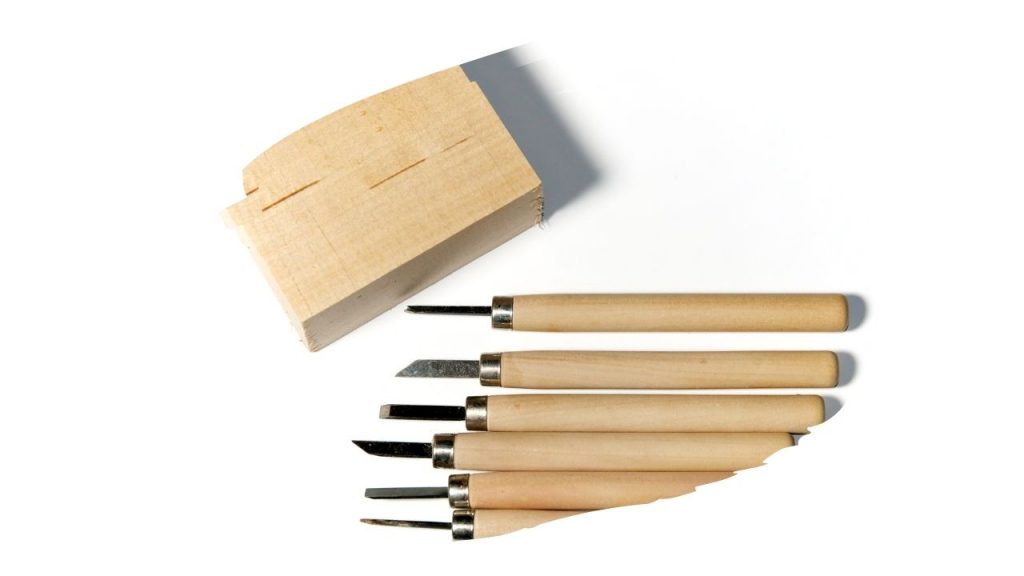Lime Wood? Basswood? Is there anything that separates the two? And if there are real differences between them, which one should you choose for your own wood crafts?
Lime Wood vs Basswood:
The main difference between Lime Wood and Basswood is their continent of origin. Lime Wood, (also known as European Lime Wood), comes from the Tilia Genus tree species. However, in North America, Lime Wood is referred to as Basswood (also known as American Whitewood). Besides their name, they also differ slightly in regards to their weight, strength and even price.
Now, this slight difference in strength means that one of these wood types is just a little bit better for woodcarving than the other. So keep reading to find out which is which…

This post may contain affiliate links to products that we receive a commission for (at no additional cost to you). Learn more here.
Is Basswood A Hardwood or Softwood?
Basswood is well known for its fine straight-grain and its surprisingly soft texture. So it is often a surprise to learn that this wood is in fact a Hardwood. This is despite it being soft enough to register a Janka rating level of just 410.
What Is The Janka Rating?
The Janka rating tells us how much impact a solid piece of wood can take.
We calculate Janka by driving a steel ball into wood. The Janka rating measures the pounds of force it takes to embed that steel ball right into the wood grain.
If It Is So Soft Then Why Is Basswood Considered A Hardwood?
One of the main differences between hardwood and softwood trees becomes apparent each and every fall; hardwood trees are deciduous. That means that they lose their leaves each year.
However, softwoods are coniferous. Which means that they typically have evergreen needle-like leaves and sprout cones (such as Pine trees).
So, even though Basswood is soft enough to carve into, it is still classed as hardwood lumber.
Just How Hard Is Lime Wood?
Whilst American Basswood has a Janka rating of 410, European Lime Wood has a Janka Rating of 700.
These ratings aren’t all that soft when compared to some of their other hardwood carving counterparts.
For example, Western White Pine – a favorite wood type amongst wood carvers – has a Janka rating of 420.
Whilst Balsa – a hardwood that is particularly loved by Cricut hobbyists – has a Janka rating of just 22.
What Is A ‘Cricut’? A Cricut is a machine that can cut intricate patterns into a range of thin materials such as paper, fabric, and thin wood types such as Balsa wood.
Is Lime Wood (AKA Basswood) Good For Carving?
European Lime wood is great for certain types of carving techniques. It holds up well when used on low impact carving styles such as whittling or carving with paring chisels.
But, it won’t withstand more robust carving styles such as deep Chip Carving.
If you want to learn a little bit more about the four main woodcarving styles, then grab the free PDF download below;
Now, if you were to directly compare European Lime Wood to American Basswood, then Basswood is slightly better for whittling.
Basswood is a bit lighter and less dense than European Lime. It’s also cheaper too (even with additional import costs).
Still, we are talking about one and the same tree species here. So, both the European and American versions of this wood type have very little grain, making it incredibly malleable and soft.
Which is perfect if you’re new to woodcarving and want to work on a piece of lumber that can offer plenty of give.
What Is Lime Wood Used For?
Generally, Lime Wood is used for woodcarving, wood turning and small model buildings.
It is also used for creating musical instruments, veneer and plywood.
Is Basswood Rot Resistant? Basswood isn’t naturally resistant to decay and rot. It also doesn’t hold up very well against everyday wear and tear. So, if you want your Basswood work craft to last, then it is going to need a few coats of a quality finish and/or sealant.
Final Thoughts
There aren’t very many significant differences between these two wood types.
At the end of the day, they are simply different versions of the same tree species. However, Basswood originates from America, whilst Lime Wood is from Europe. Still, Lime Wood does have a higher Janka rating than Basswood, making it heavier and stronger than its counterpart.




